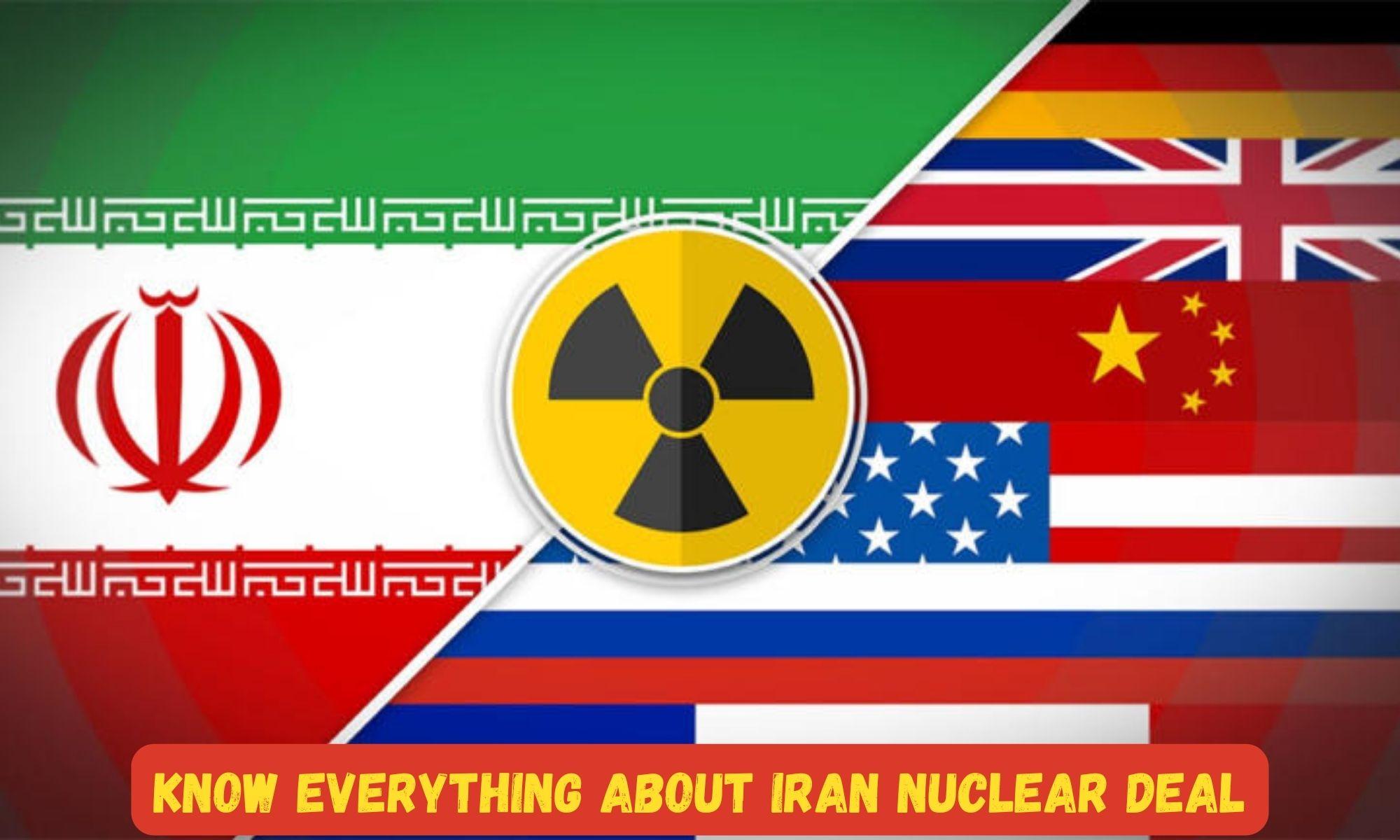Iran Nuclear Deal: Introduction
The Joint Comprehensive Plan of Action (JCPOA), more commonly referred to as the Iran nuclear agreement, was established in July 2015 between Iran and multiple global powers, including the United States.
Buy Prime Test Series for all Banking, SSC, Insurance & other exams
The objective of the agreement was for Iran to dismantle a significant part of its nuclear program and allow for more extensive international inspections. In return, billions of dollars’ worth of sanctions relief was granted to Iran.
Iran Nuclear Deal: What’s important?
The proponents of the agreement believed it would help prevent the revival of Iran’s nuclear weapons program and reduce conflict with regional rivals such as Israel and Saudi Arabia.
However, when President Trump withdrew the United States from the agreement in 2018, it placed the deal in jeopardy.
- Iran has resumed some of its nuclear activities in retaliation for this, as well as for deadly attacks on prominent Iranians, including one by the United States in 2020.
- President Biden stated in 2021 that if Iran became compliant again, the United States would re-enter the deal. Although their diplomatic relations initially appeared optimistic, it remains unclear if the parties can negotiate a new agreement.
Iran Nuclear Deal: All Participants
- The JCPOA was put into effect in January 2016 and places limitations on Iran’s civilian nuclear enrichment program.
- Negotiations involved the P5+1, comprising China, France, Russia, the United Kingdom and the United States plus Germany, alongside the European Union.
- Saudi Arabia, among other Middle Eastern nations, argued that they should have been consulted considering their potential vulnerability if Iran gained nuclear abilities. Israel objected to the agreement, stating that it was too lenient.
Iran Nuclear Deal: Objectives
- The main objective of the P5+1 was to limit Iran’s nuclear program to a level where, if it ever decided to develop a nuclear weapon, it would take at least a year to accomplish, providing world powers with sufficient time to take necessary action.
- Iran’s pursuit of becoming a nuclear weapons state posed a major risk of destabilizing the region, potentially leading to Israel taking military action, which could result in reprisals by Hezbollah, as well as disruptions in oil transportation in the Persian Gulf.
- Prior to the JCPOA, the P5+1 had been engaged in negotiations with Iran for years to halt uranium enrichment, offering various incentives.
- Conversely, Iran sought the JCPOA as a means of obtaining relief from the international sanctions that had severely impacted its economy.
Is the Iran nuclear deal effective in preventing Iran from obtaining nuclear weapons?
- According to many experts, if all parties keep their promises, the deal could successfully prevent Iran from developing a nuclear weapon for more than ten years.
- The deal places restrictions on Iran’s nuclear program, including limitations on the number and type of centrifuges it can use, the level of enrichment allowed, and the amount of enriched uranium it can possess.
- Iran agreed not to produce highly enriched uranium or plutonium for nuclear weapons, and to ensure that its nuclear facilities pursued only civilian purposes, such as medical and industrial research.
- The deal also includes measures for monitoring and verification to guard against secret nuclear activities and allows for inspections of Iran’s nuclear facilities by the International Atomic Energy Agency (IAEA).
However, some criticisms of the deal point to certain restrictions having expiration dates and the possibility of Iran funding regional terrorism with sanctions relief. A Joint Commission composed of representatives from all negotiating parties oversees the implementation of the agreement and resolves disputes that may arise.
Points to which other Signatories agreed:
- The other signatories of the Iran deal agreed to lift their nuclear-related sanctions on Iran while some U.S. sanctions remained in effect pertaining to Iran’s ballistic missile program, support for terrorist groups, and human rights abuses.
- The United States also kept restrictions on financial transactions. In addition, after five years, a UN ban on Iran’s transfer of conventional weapons and ballistic missiles would be lifted if Iran is only engaged in civilian nuclear activity, as certified by the IAEA.
- The sanctions relief would be reconsidered by the UN Security Council if any signatory suspects Iran is violating the deal, with a “snapback” mechanism for ten years.
- The agreement was initially complied with, but the deal came near collapse since the U.S. withdrew from it in 2018 and reinstated banking and oil sanctions on Iran.
- The United States aimed to halt Iran’s oil exports completely.
What is currently happening with Iran’s nuclear activity?
- In 2019, Iran broke agreed-upon limits to its low-enriched uranium stockpile, increased enrichment concentrations, and developed new centrifuges to accelerate uranium enrichment while resuming heavy water production at its Arak facility.
- It also began enriching uranium at Fordow, rendering the isotopes produced unusable for medical purposes. In 2020, after a series of attacks on Iranian interests, Iran announced it would no longer limit its uranium enrichment and began constructing a new centrifuge production center at Natanz.
- Iran’s parliament passed a law leading to a major increase in uranium enrichment at Fordow in response to the assassination of a nuclear scientist, which it attributed to Israel.
- Last year, Iran announced new restrictions on IAEA inspections and ended its monitoring agreement with the agency entirely.
Did the deal affect Iran’s economy?
Yes, the deal had a significant impact on Iran’s economy. Prior to the Joint Comprehensive Plan of Action (JCPOA), Iran suffered from years of recession, currency depreciation, and inflation due to sanctions on its energy sector. After the sanctions were lifted, inflation slowed, exchange rates stabilized, and exports increased, especially of oil, agricultural goods, and luxury items.
However, the end of sanctions waivers on oil exports in 2018, the restoration of U.S. sanctions, and the imposition of sanctions on eighteen major Iranian banks have once again cut deeply into Iran’s economy, which heavily relies on oil and petroleum products.
Multinational firms fear being punished by the United States for doing business with sanctioned Iranian entities associated with, for example, the Islamic Revolutionary Guard Corps (IRGC), contributing to the growth of black markets that enrich the IRGC at the expense of the regular economy.
Find More International News Here



 Indian Olympic Medal Winners List Till N...
Indian Olympic Medal Winners List Till N...
 Who is the Inventor of the Gramophone?
Who is the Inventor of the Gramophone?
 HS Dhaliwal Appointed New DGP Of Andaman...
HS Dhaliwal Appointed New DGP Of Andaman...
